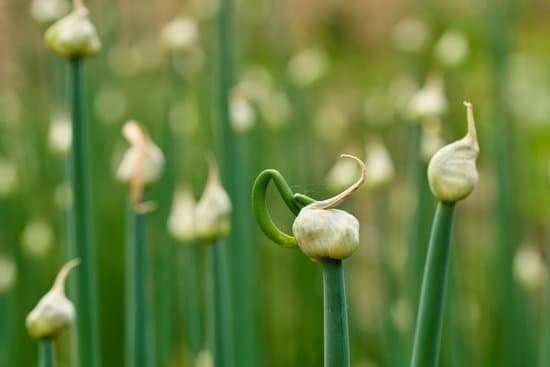A full sun perennial garden is a beautiful and sustainable way to bring color, life, and joy to your outdoor space. With the right plants and design plan, you can create an enchanting butterfly haven that will not only delight your senses but also support the important role of these delicate creatures in our ecosystem.
In this article, we will guide you through the process of designing and maintaining a full sun perennial garden with a specific focus on attracting butterflies. Whether you are a seasoned gardener or just starting out, our comprehensive butterfly garden design plans will help you create a thriving oasis that will be visited by these winged wonders year after year.
When it comes to full sun perennial gardens, they are defined by one key characteristic – they thrive in direct sunlight for at least six hours per day. This means selecting plants that can withstand the intense heat and still bloom with vibrancy. A well-designed full sun perennial garden not only brings visual beauty but also provides numerous benefits such as conserving water, reducing soil erosion, attracting beneficial insects, including pollinators like butterflies.
Attracting butterflies to your garden is both rewarding and important for our environment. Butterflies serve as pollinators and play a vital role in promoting plant reproduction and biodiversity. To create a butterfly-friendly habitat, it is crucial to understand their lifecycle and preferences when selecting plants for your garden.
By incorporating specific flowers, host plants for caterpillars, water sources, windbreaks, and other essential elements into your design plan, you can make your garden an irresistible destination for these graceful creatures. In this article, we will provide detailed instructions on designing a functional and visually appealing butterfly garden layout to maximize the number of butterflies visiting your space.
Now let’s dive into the step-by-step process of understanding full sun perennial gardens and creating the perfect butterfly habitat within your own backyard.
Understanding Full Sun Perennial Gardens
Full sun perennial gardens are a popular choice among gardeners due to their ability to thrive in areas with direct sunlight for most of the day. Understanding the characteristics and benefits of full sun perennial gardens is essential when designing and maintaining a successful garden that attracts butterflies.
Characteristics of Full Sun Perennial Gardens
Full sun perennial gardens are characterized by their ability to withstand long hours of direct sunlight. These types of gardens typically consist of plants that have adapted to hot and sunny climates, making them low maintenance and durable. The plants in full sun perennial gardens are known for their vibrant colors, strong fragrance, and attractive foliage. They often include flowering plants that provide nectar and caterpillar host plants, creating an ideal habitat for butterflies.
Benefits of Full Sun Perennial Gardens
There are several benefits to having a full sun perennial garden. Firstly, these gardens require less water compared to other types of gardens since they primarily consist of drought-tolerant plants. Additionally, full sun perennials are known for their ability to attract butterflies, which adds beauty and charm to the garden while also supporting pollinator populations. Moreover, these gardens tend to be long-lasting as perennials come back year after year, reducing the need for replanting.
Choosing the Right Plants
When designing a full sun perennial garden with a butterfly theme, it is essential to select the right plants that not only flourish in sunny conditions but also attract butterflies to your garden. Here is a detailed list of perennial plants that will not only thrive in full sun but also serve as magnets for these beautiful creatures.
1. Milkweed (Asclepias spp.): Milkweed is renowned for its ability to attract monarch butterflies, as it serves as their primary food source. This perennial plant features clusters of colorful flowers and is easy to grow from seed or transplants.
2. Black-eyed Susan (Rudbeckia hirta): With its vibrant yellow petals and dark centers, black-eyed Susans are known to entice numerous butterfly species, including painted ladies and swallowtails. They are low-maintenance plants that add cheerful pops of color to any garden landscape.
3. Purple Coneflower (Echinacea purpurea): This popular perennial plant boasts distinctive purple petals surrounding an orange cone-shaped center. Not only does it provide nectar for butterflies and other pollinators, but it also adds visual interest with its unique blooms.
4. Butterfly Bush (Buddleja davidii): As the name suggests, the butterfly bush is a must-have for any butterfly garden. Its long spikes of flowers produce abundant nectar that attracts various butterfly species such as monarchs, swallowtails, and painted ladies.
5. Liatris (Liatris spicata): Liatris, commonly known as blazing star or gayfeather, has eye-catching flower spikes that are irresistible to butterflies like fritillaries and skippers. These tall perennials provide vertical interest in the garden and thrive under full sun conditions.
6. Lantana (Lantana camara): Lantana is a heat-tolerant perennial plant that lures butterflies with its clusters of brightly colored flowers in shades of red, orange, yellow, and pink. It continuously blooms throughout the summer, making it a favorite among gardeners and butterflies alike.
When selecting plants for your full sun perennial butterfly garden, consider incorporating a variety of colors, heights, and bloom times to attract a diverse range of butterfly species. By including these plants in your garden design, you will create an inviting habitat that provides food and shelter for butterflies while adding beauty and charm to your outdoor space.
Designing Your Butterfly Garden
Assess Your Space and Sun Exposure
Before diving into the design process, it is important to assess your available space and evaluate the amount of sun exposure it receives. Butterflies are attracted to sunny areas, so choosing a spot that gets at least six hours of direct sunlight each day is ideal. Take note of any existing structures, trees, or shrubs that may cast shade on your garden and plan accordingly.
Determine Your Garden Shape and Size
Next, decide on the shape and size of your butterfly garden. The shape can be anything from a traditional rectangular bed to a circular or curved design, depending on your preference and available space. Consider the overall dimensions as well, ensuring that it will fit seamlessly into your existing landscape.
Lay Out Your Garden Beds
Once you have determined the shape and size of your butterfly garden, mark the borders with stakes or string to outline where your garden beds will be located. Prepare the soil in these designated areas by removing any grass or weeds and loosening the soil with a garden fork or tiller.
Select Plants According to Height and Spread
When selecting plants for your butterfly garden, consider their mature height and spread to ensure they won’t overcrowd each other. Place taller plants towards the back of the bed and shorter ones towards the front to create depth and visual interest. Additionally, choose plants that offer different bloom times throughout the season to provide nectar for butterflies during their entire lifecycle.
Arrange Plants in Groupings
To create a more naturalistic look in your butterfly garden, arrange plants in groupings rather than planting them individually throughout the bed. This mimics how they might grow in nature and makes it easier for butterflies to spot their desired nectar sources.
Incorporate Pathways and Focal Points
Consider adding pathways or stepping stones within your butterfly garden to provide easy access for maintenance and observation. These pathways can also serve as focal points, leading the eye through the garden and creating a sense of movement. Place a decorative element such as a bird bath, sculpture, or bench as another focal point to enhance the overall aesthetic appeal.
By following these step-by-step instructions, you can create a functional and aesthetically pleasing butterfly garden layout that will attract butterflies and bring beauty to your outdoor space. Remember to regularly maintain your garden by watering, weeding, and fertilizing as needed to ensure its long-term success.
Creating a Colorful Palette
One of the most enticing aspects of a butterfly garden is the opportunity to enjoy a burst of color and beauty. By carefully selecting a variety of vibrant flowers, you can not only attract butterflies but also enhance the visual appeal of your garden. Here are some suggestions for creating a colorful palette that will surely delight both you and the butterflies.
A fabulous flower choice for any butterfly garden is the butterfly bush (Buddleja). With its long panicles of colorful flowers, this plant serves as a magnet for many butterfly species. Available in shades of purple, pink, white, and yellow, the butterfly bush adds drama and charm to any garden.
Another stunning flower option is the coneflower (Echinacea), which comes in various shades of purple, pink, orange, and red. Not only do these flowers add vibrant colors to your garden, but they also provide nectar-rich food for butterflies. The coneflower’s spiky texture adds an interesting element to the garden design as well.
For those who prefer delicate pastel hues, consider incorporating some phlox (Phlox paniculata) into your garden. These flowers bloom in shades of lavender, pink, and white. They create a soft and romantic aesthetic while attracting butterflies with their sweet fragrance.
To add some height and vertical interest to your garden, consider planting some blazing star (Liatris spicata). This wildflower produces tall spikes covered in tiny purple or white blooms. Its architectural shape creates an attractive focal point while providing important nectar sources for butterflies.
By choosing these vibrant flowers for your butterfly garden, you can create a visually stunning space that will not only attract butterflies but also bring joy and beauty to your outdoor environment.
| Flower | Color |
|---|---|
| Butterfly Bush | Purple, Pink, White, Yellow |
| Coneflower | Purple, Pink, Orange, Red |
| Phlox | Lavender, Pink, White |
| Blazing Star (Liatris spicata) | Purple or White |
Incorporating Butterfly-Friendly Features
Creating a butterfly garden goes beyond just selecting the right plants. To truly enhance the overall butterfly habitat in your full sun perennial garden, it is important to incorporate various butterfly-friendly features. These features provide essential resources that butterflies need to survive and thrive.
One key element to include in your butterfly garden design is a water source. Butterflies require water for drinking and puddling, which is when they gather around shallow pools or damp soil to obtain essential minerals.
You can incorporate a birdbath, a shallow dish with stones for them to perch on, or even create a small pond or water feature. Just make sure that the water source is easily accessible for butterflies but shallow enough to prevent them from accidentally drowning.
Another crucial aspect is including host plants in your garden layout. Host plants are species of plants on which butterflies lay their eggs. These plants serve as food sources for caterpillars once they hatch. By providing host plants, you not only attract butterflies but also support their life cycle. Some common examples of host plants include milkweed for monarch butterflies and parsley for black swallowtail butterflies. Research the specific butterfly species in your area and choose host plants accordingly.
Furthermore, incorporating windbreaks can help create a more favorable environment for butterflies. Strong winds can be detrimental to these delicate creatures, so planting tall shrubs or erecting fences can provide protection from excessive wind gusts. This also helps create microclimates within your garden that are more suitable for butterflies.
Incorporating these butterfly-friendly features will greatly enhance the overall habitat in your full sun perennial garden. By providing a water source, including host plants, and implementing windbreaks, you are giving butterflies the essential resources they need to thrive and complete their life cycles within your garden space. Not only will this attract more butterflies, but it will also contribute to the conservation efforts of these enchanting creatures.
Maintenance Tips
Maintaining a full sun perennial garden requires proper care and attention to ensure its health and attractiveness to butterflies. Here are some practical maintenance tips that will help you keep your garden thriving:
1. Watering: Adequate watering is crucial for the survival of your plants, especially in full sun gardens where they are exposed to intense heat. Water deeply but infrequently, allowing the soil to dry out slightly between waterings. Avoid overwatering, as it can lead to root rot. Mulching around plants can help retain moisture and reduce evaporation.
2. Fertilizing: Supplying nutrients to your plants is essential for their growth and overall health. Use a slow-release organic fertilizer specifically formulated for perennials, following the recommended application rates. Apply the fertilizer in early spring or as directed on the packaging, avoiding direct contact with the plant stems.
3. Pruning and Deadheading: Regular pruning not only promotes healthy growth but also helps maintain a neat appearance in your garden. Remove any dead or damaged foliage and spent flowers by deadheading regularly throughout the growing season. This encourages new blooms and prevents seed formation, redirecting energy towards plant growth.
4. Pest Control: Keep an eye out for common pests that may attack your garden, such as aphids or caterpillars. Inspect your plants regularly and take appropriate measures if necessary, like using organic insecticides or manual removal techniques.
5. Weed Management: Weeds compete with your perennial plants for resources like nutrients and water, so it’s important to keep them under control. Regularly weed your garden beds to prevent them from taking over and choking out your desired plants.
6. Butterfly Habitats: In addition to caring for the plants themselves, consider incorporating specific features that attract butterflies and provide additional habitat elements for them to thrive in your garden. Install shallow dishes filled with water for drinking or puddling purposes, include host plants that serve as food sources for caterpillars, and create windbreaks using trellises or hedges to provide shelter for the delicate butterflies.
By following these maintenance tips, you can ensure that your full sun perennial garden remains healthy, vibrant, and attractive to butterflies. Remember to observe your garden regularly, make adjustments as needed, and enjoy the beauty of these graceful creatures fluttering amidst your colorful blooms.
Troubleshooting and Common Issues
Creating a butterfly garden is a rewarding endeavor, but it can also come with its fair share of challenges. In this section, we will address some common concerns and problems that gardeners may face when establishing and maintaining a butterfly garden in full sun.
One of the main challenges is dealing with pests. While butterflies are a welcome sight in any garden, other insects may also be attracted to the flowers. For instance, aphids can infest plants, causing damage to leaves and buds. To combat this issue, consider introducing beneficial insects such as ladybugs or lacewings, which feed on aphids. Alternatively, you can use organic insecticides specifically targeted for aphid control.
Another issue that may arise is poor soil quality. Full sun perennial gardens require well-drained soil rich in organic matter. If your soil is compacted or lacking nutrients, it’s essential to amend it before planting. Adding compost or aged manure can improve soil structure and fertility. Additionally, regular application of organic mulch will help to conserve moisture and suppress weeds.
Watering can also be a concern in full sun gardens. During hot summer months, the plants may need more frequent watering to withstand the heat stress. However, overwatering can lead to root rot and other fungal diseases. To strike the right balance, water deeply but infrequently – allowing the top inch of soil to dry out before watering again.
By anticipating these common concerns and problems when establishing and maintaining your butterfly garden in full sun, you’ll be better equipped to create a thriving habitat for butterflies while enjoying the beauty they bring to your garden.
Conclusion
In conclusion, creating a full sun perennial garden with a well-designed butterfly garden layout is not only visually stunning but also beneficial for the environment. By incorporating the right plants and features, you can attract butterflies and enhance their habitat while enjoying a vibrant and colorful garden.
Throughout this article, we have discussed the importance of understanding full sun perennial gardens and how they offer numerous benefits, including low maintenance requirements and long-lasting blooms. We have also provided a detailed list of perennial plants that thrive in full sun and attract butterflies, giving you the tools to make informed plant selections for your garden.
Designing your butterfly garden may seem like a daunting task, but by following step-by-step instructions, you can create a functional and aesthetically pleasing layout that will be both inviting to butterflies and enjoyable for you. Additionally, by selecting a variety of vibrant flowers that bloom at different times throughout the year, you can ensure continuous food sources for butterflies while adding visual interest to your space.
To further enhance your butterfly habitat, we have suggested incorporating butterfly-friendly features such as water sources, host plants for caterpillars to feed on, and windbreaks to provide shelter. These elements will not only attract more butterflies but also contribute to their overall well-being in your garden.
Lastly, we have provided maintenance tips to help you keep your full sun perennial garden thriving. From proper watering techniques to pruning advice, these practical tips will assist you in maintaining a healthy garden that remains attractive to both butterflies and humans alike.
Frequently Asked Questions
How Do You Layout a Butterfly Garden?
Creating a butterfly garden involves careful planning and consideration of the layout. First, choose a location that receives plenty of sunlight as most butterflies prefer areas with ample sun exposure. Next, select plants that attract butterflies and provide them with food sources such as nectar-rich flowers. Planting a diverse array of flowering plants with different blooming periods ensures a continuous supply of nectar throughout the season.
Additionally, incorporate host plants for butterflies to lay their eggs on, as these will attract caterpillars. Arrange the plants in clusters or groups, as this helps butterflies locate the flowers more easily. Incorporating rocks or flat stones in the garden provides sunning spots for butterflies to bask and warm themselves. Finally, include a water source like a shallow dish or birdbath to help sustain the butterflies by providing them with drinking water.
How Do You Layout a Perennial Garden?
Designing a perennial garden requires careful thought to ensure a beautiful and long-lasting display of flowers year after year. Firstly, choose an area with well-drained soil that receives adequate sunlight and matches the light requirements of your selected perennials. Begin by selecting perennial flowers that are suitable for your climate zone and bloom at different times throughout the year to ensure constant color and interest in your garden.
Consider factors such as height, color palette, texture, and fragrance when choosing your plants for added variety. Place taller perennials towards the back of the flower bed or in the center if it is viewed from all sides, while shorter ones can be planted towards the front or edges. Additionally, consider incorporating flowering shrubs or ornamental grasses to add structure and dimension to your perennial garden design.
Do Butterfly Gardens Need Full Sun?
While some butterfly species can tolerate partial shade, most butterfly gardens thrive in full sun conditions because butterflies require warmth for optimal activity levels and energy production. Full sun exposure is crucial for attracting butterflies as it allows their preferred food sources – nectar-rich flowers – to bloom vigorously and produce abundant nectar. Additionally, butterflies often rely on the sun’s rays to regulate their body temperature and enable them to fly.
Therefore, it is highly recommended to provide at least six hours of direct sunlight per day for your butterfly garden. However, if your location only offers partial shade, you can still create a successful butterfly garden by selecting plants that can tolerate those conditions and providing ample nectar sources and host plants to attract and support butterflies despite the reduced sunlight.

Welcome to my gardening blog! I am passionate about plants and enjoy sharing my knowledge and experiences with others. In this blog, I will write about everything related to gardening, from tips on how to get started to updates on my own garden projects.





